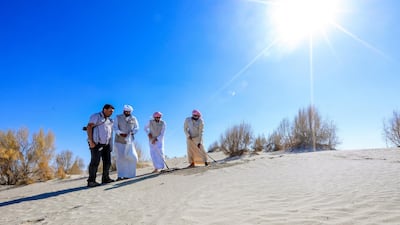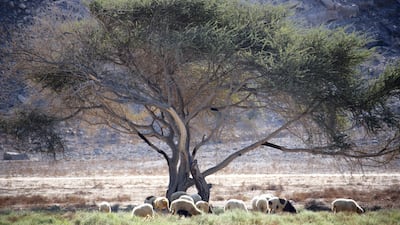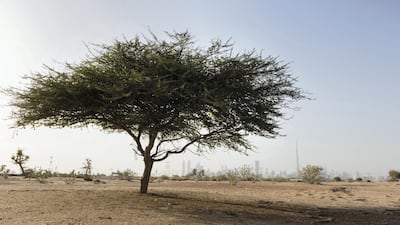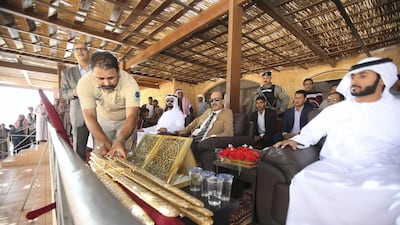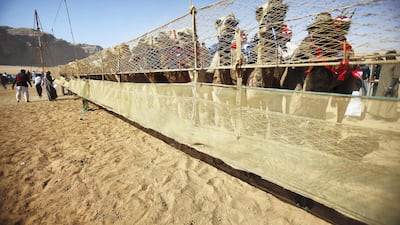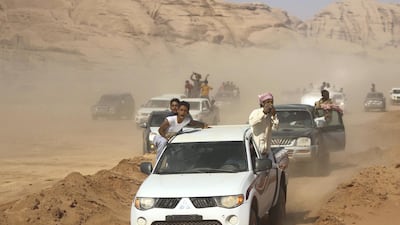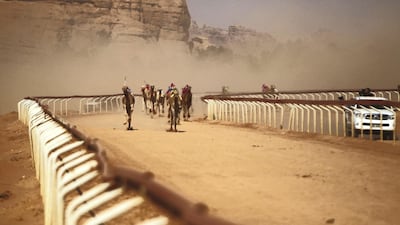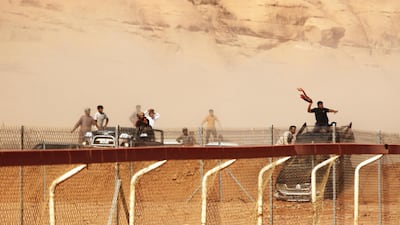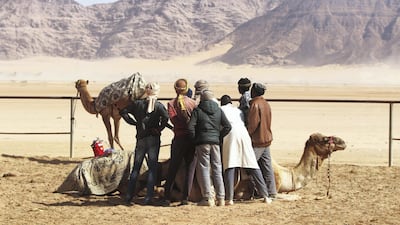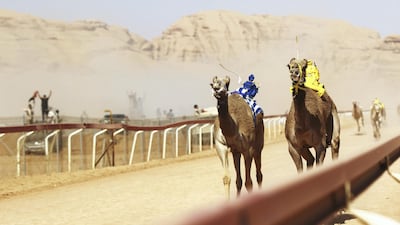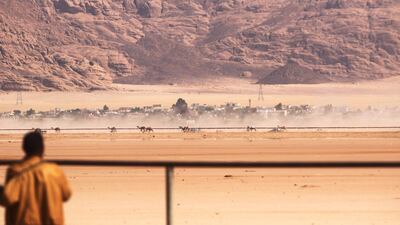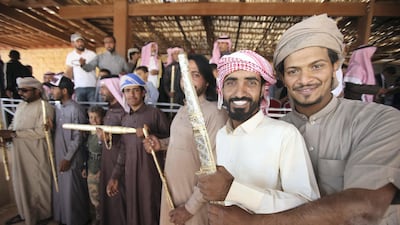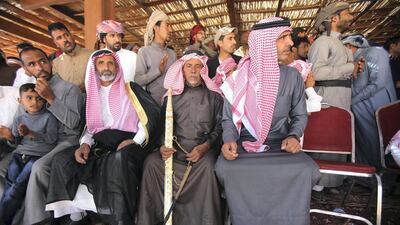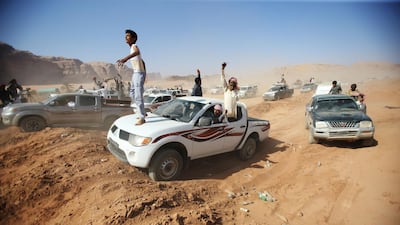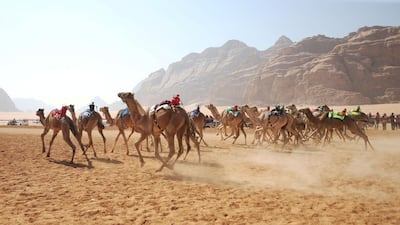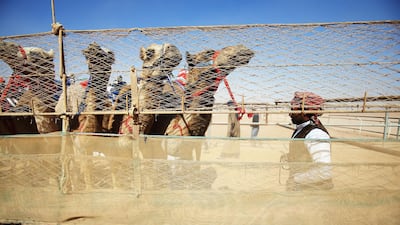Areas of the UAE desert were once carpeted with trees, plants and shrubs that have since been decimated by camels, farmers said.
Researchers have long identified overgrazing as one of the Emirates’ “main environmental challenges”.
Last year, the Environment Agency Abu Dhabi said the rising popularity of camel ownership in the UAE risked wiping out rare desert plant life.
The agency has now released a short documentary to demonstrate what has been lost, based on first-hand accounts of camel farmers. The film was released on the agency's Instagram page.
“The desert was full of shrubs and grasses in the past,” said Ahmed Al Kindi, from Madinat Zayed.
“When the young camel would sit you would not be able to see it because of how tall the grasses were.”
Camel ownership has exploded in recent years, according to official figures.
There were more than 408,000 camels in Abu Dhabi in 2017, a rise of almost 50 per cent since 2010.
The mammals eat wild grasses and desert shrubs and have adapted to consume species avoided by other animals.
In another scene in the short film, camel farmer Saker Al Mehairbi, of Al Wathba, stands in front of a patch of desert sparsely peppered with plants.
“This area is called Sarami,” he said. “It used to have so many different native shrubs, such as rimth, alqa, anqood, and endless amounts of ghada covered this whole area. It was all green.”
The land used to be rich, with plants and trees everywhere, said Mohammed Al Mazrouei, a camel farmer from Al Dhafra.
“Nowadays there are too many camels. They have eaten everything,” he said.
“They’ve grazed on all the old trees and shrubs, even the branches. To add to this, we haven’t had rain for a year. They’ve grazed on everything. They haven’t left anything. The land is left totally barren.”
Plants and shrubs can still be found in the desert, but usually only in protected areas, they said.
“Today, you can find lots of plants in the fenced areas. But outside there is nothing,” Mr Al Mazrouei said.
This year, President Sheikh Khalifa issued a new law to regulate grazing in Abu Dhabi, to prevent further loss of plant life.
The legislation, enforced by EAD, stipulates grazing areas must be two kilometres from natural reserves and outside the borders of critical habitats.
Anyone wishing to manage grazing areas for camels and other livestock must apply for a permit from the authority.
Some people said camel ownership should be curtailed.
“There must be strict regulations so that people reduce the number of camels they have or are restricted from grazing in many areas,” Mr Al Kindi said.
Camel ownership is a key part of the UAE’s culture and heritage.
Known as ships of the desert, they were historically used as a means of transport and as a source of food and milk.
They are still celebrated, with the best and most beautiful fetching up to Dh12 million ($3.26m) in camel races and pageants.
Thousands attend camel beauty contests across the UAE that feature multimillion-dirham prizes.
Owners spend the entire year preparing their camels for the occasions, feeding them protein powder, milk and honey and treating their coats with olive oil to ensure they are shiny.

